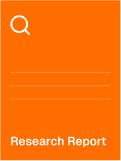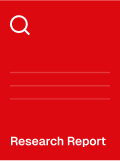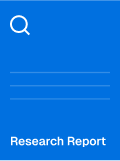
Population Health Management - Market Share Analysis, Industry Trends & Statistics, Growth Forecasts (2025 - 2030)
Description
Population Health Management Market Analysis
The Population Health Management market size stands at USD 63.5 billion in 2025 and is forecast to climb to USD 150.83 billion by 2030, expanding at an 18.89 % CAGR during the period. This rapid expansion mirrors healthcare’s pivot from one-off treatments to continual oversight of whole populations, creating new layers of demand for data-driven care coordination. Fresh momentum comes from three converging forces: value-based reimbursement, AI-enabled analytics, and rising chronic-disease prevalence. Each factor pushes decision-makers to invest in connected tools that spot care gaps earlier and allocate resources more precisely. An additional inference is that stronger financial incentives—not merely better technology—are nudging organizations toward full-scale adoption, suggesting reimbursement tweaks can accelerate digital upgrades faster than raw innovation.
Another dimension shaping the Population Health Management industry is the clear link between preventive care and cost control; payers and providers see measurable savings when hospitalizations fall and readmissions drop. North America leads with an estimated 48.8% Population Health Management market share in 2024, yet Asia-Pacific’s growth pace hints that leadership could diversify as digital health spending rises across emerging economies. The inference here is that an early focus on cloud delivery allows new entrants in fast-growing regions to leapfrog legacy systems, reducing time to value. Continued deal activity—USD 69 billion in 2024 healthcare M&A alone—signals that scale, data breadth, and ecosystem reach are becoming the real competitive currencies.
Global Population Health Management Market Trends and Insights
Need for Unified Longitudinal Patient Records Across Care Continuum
Healthcare organizations that create holistic patient files report 7% higher coding-gap closure and 17% more annual wellness visits, showing that integrated data directly boosts quality metrics. The practical takeaway is that a coherent record not only supports clinicians but also improves revenue capture under risk-based contracts. A further inference is that longitudinal data sets become strategic assets, making interoperability a board-level priority rather than an IT task.
Escalating Chronic-Disease Burden Requiring Long-term Surveillance
Chronic conditions now consume 90% of healthcare spending in the United States. Population health platforms address this pressure by layering continuous monitoring on top of clinical workflows, cutting hospitalizations 29% in programs such as Senscio Systems’ Ibis Health. One emerging inference is that algorithm-driven alerts can normalize proactive care behaviors among patients, turning constant contact into a routine expectation.
Need for Multidisciplinary Implementation Teams
Health Catalyst observes that effective deployments require combined clinical, analytics, and administrative expertise. Scarcity of data scientists and care-coordination specialists delays go-lives, nudging organizations toward managed-service models. A reasonable inference is that the services segment will keep outpacing software until talent pipelines catch up.
Other drivers and restraints analyzed in the detailed report include:
- Public–Private Funding Surge in Digital Health Infrastructure
- Shift to Value-based Payment Models Accelerating PHM Adoption
- AI-powered Predictive Analytics Enabling Proactive Interventions
- Regulatory Incentives Boosting Reporting Compliance
- Reimbursement Gaps for Preventive/Population-based Care
For complete list of drivers and restraints, kindly check the Table Of Contents.
Segment Analysis
Software commands a 44.1% Population Health Management market share in 2024, delivering analytics dashboards, risk models, and quality-reporting tools core to value-based programs. These platforms support care-gap closure and regulatory submissions, anchoring many provider digital strategies. A fresh inference is that because software licenses bundle incremental upgrades, providers often accept vendor lock-in as a trade-off for rapid compliance updates.
The services segment, however, is forecast to grow at a 20.6% CAGR from 2025-2030, overtaking hardware’s contribution as organizations lean on external experts for implementation, change management, and ongoing optimization. This trend reveals that many health systems prefer to outsource complexity rather than build in-house capabilities, indirectly expanding addressable revenue for consulting partners.
Hardware currently forms the smallest slice of the Population Health Management market size, yet remote monitoring devices such as glucometers and pulse oximeters are starting to shift that balance. The inference is that consumer comfort with wearables will softly enlarge the install base of clinical-grade devices, reinforcing data pipelines built by software vendors.
As more physiological data streams enter analytics engines, providers can intervene earlier, reducing acute-care costs. This feedback loop creates new demand for secure network gear and edge storage, indicating hardware revenues may spike once reimbursement codes for remote monitoring mature.
Population Health Analytics held 31.5% market share in 2024, underpinned by platforms like Milliman’s MARA that parse acute, chronic, and social drivers of risk. The inference is that payer-provider collaborations will deepen because shared analytics frameworks align incentives on a single version of truth.
Patient Engagement Solutions, forecast to post a 22.1% CAGR, reflect growing awareness that activated members complete four times more health actions than inactive peers. The rising tide suggests member-facing apps will soon migrate from optional engagement add-ons to central components of risk contracts.
Care Coordination and Risk-Stratification tools remain vital in the Population Health Management industry, linking multidisciplinary teams across settings. An inference is that tighter EHR integration will lower clinician screen-time, subtly improving job satisfaction.
Clinical Workflow Management systems—though smaller—embed population insights at the point of care, driving adherence. Uptake is likely to strengthen as frontline staff demand frictionless interfaces that mirror consumer apps.
The Report Covers Global Population Health Management Solutions Market Growth and is Segmented by Component (Software, Services, and Hardware), Solution Type (Population Health Analytics, Patient Engagement Solutions, and More), Delivery Mode (On-Premise, Cloud-Based / Web-Based, and Hybrid), End User (Healthcare Providers, and Payers), and Geography
Geography Analysis
North America commands a 48.8% Population Health Management market share in 2024, supported by mature EHR penetration, value-based incentives, and active M&A worth USD 69 billion in 2024. The inference is that consolidation is knitting disparate data sources together, enhancing the predictive accuracy of regional analytics pools.
Asia-Pacific is the fastest-growing region, poised for a 19.4% CAGR through 2030. Rapid urbanization, smartphone ubiquity, and an aging population converge to create fertile ground for Population Health Management industry solutions. The new inference is that cultural adaptation—such as simplified user interfaces—could prove as decisive as price when courting first-time digital health users.
Europe maintains significant momentum, spurred by an older demographic set to top 300 million adults over 60 by 2050. GDPR compliance forces vendors to bake privacy safeguards into product design, shaping global best practices. The inference is that strong privacy norms may eventually elevate European suppliers into preferred partners for cross-border data collaborations.
List of Companies Covered in this Report:
- Allscripts
- Oracle Corporation (Oracle Health/Cerner)
- Optum
- Epic Systems
- Koninklijke Philips
- Health Catalyst
- IBM (Merative)
- Mckesson
- Conifer Health Solutions
- eClinicalWorks LLC
- Athenahealth
- Arcadia.io
- Cotiviti
- Medecision
- NextGen Healthcare
- Lumeris Inc.
- Innovaccer
- Persivia Inc.
- Lightbeam Health Solutions
- Enli Health Intelligence (symplr)
Additional Benefits:
- The market estimate (ME) sheet in Excel format
- 3 months of analyst support
Table of Contents
- 1 Introduction
- 1.1 Study Assumptions & Market Definition
- 1.2 Scope of the Study
- 2 Research Methodology
- 3 Executive Summary
- 4 Market Landscape
- 4.1 Market Overview
- 4.2 Market Drivers
- 4.2.1 Need for Unified Longitudinal Patient Records Across Care Continuum
- 4.2.2 Escalating Chronic-Disease Burden Requiring Long-term Surveillance
- 4.2.3 Public–Private Funding Surge in Digital Health Infrastructure
- 4.2.4 Shift to Value-based Payment Models Accelerating PHM Adoption
- 4.2.5 AI-powered Predictive Analytics Enabling Proactive Interventions
- 4.2.6 Regulatory Incentives (e.g., CMS QPP, EU HTA) Boosting Reporting Compliance
- 4.3 Market Restraints
- 4.3.1 Need for Multidisciplinary Implementation Teams
- 4.3.2 Reimbursement Gaps for Preventive/Population-based Care
- 4.3.3 Data-privacy & Interoperability Barriers Among Disparate Systems
- 4.3.4 Limited Digital Literacy in Low-resource Settings
- 4.4 Value / Supply-Chain Analysis
- 4.5 Regulatory & Technological Outlook
- 4.6 Porter’s Five Forces
- 4.6.1 Threat of New Entrants
- 4.6.2 Bargaining Power of Buyers/Consumers
- 4.6.3 Bargaining Power of Suppliers
- 4.6.4 Threat of Substitute Products
- 4.6.5 Intensity of Competitive Rivalry
- 5 Market Size & Growth Forecasts (Value)
- 5.1 By Component
- 5.1.1 Software
- 5.1.1.1 Stand-alone Software
- 5.1.1.2 Integrated Software Suites
- 5.1.2 Services
- 5.1.2.1 Consulting & Training
- 5.1.2.2 Implementation & Integration
- 5.1.2.3 Support & Maintenance
- 5.1.3 Hardware
- 5.1.3.1 Servers & Storage
- 5.1.3.2 Networking Devices
- 5.1.3.3 Wearable & Remote-Monitoring Devices
- 5.2 By Solution Type
- 5.2.1 Population Health Analytics
- 5.2.2 Patient Engagement Solutions
- 5.2.3 Care Coordination Tools
- 5.2.4 Risk-Stratification & Reporting Solutions
- 5.2.5 Clinical Workflow Management
- 5.3 By Delivery Mode
- 5.3.1 On-premise
- 5.3.2 Cloud-based / Web-based
- 5.3.3 Hybrid
- 5.4 By End-User
- 5.4.1 Healthcare Providers
- 5.4.2 Payers
- 5.5 By Geography
- 5.5.1 North America
- 5.5.1.1 United States
- 5.5.1.2 Canada
- 5.5.1.3 Mexico
- 5.5.2 Europe
- 5.5.2.1 Germany
- 5.5.2.2 United Kingdom
- 5.5.2.3 France
- 5.5.2.4 Italy
- 5.5.2.5 Spain
- 5.5.2.6 Rest of Europe
- 5.5.3 Asia-Pacific
- 5.5.3.1 China
- 5.5.3.2 Japan
- 5.5.3.3 India
- 5.5.3.4 South Korea
- 5.5.3.5 Australia
- 5.5.3.6 Rest of Asia-Pacific
- 5.5.4 Middle East
- 5.5.4.1 GCC
- 5.5.4.2 South Africa
- 5.5.4.3 Rest of Middle East
- 5.5.5 South America
- 5.5.5.1 Brazil
- 5.5.5.2 Argentina
- 5.5.5.3 Rest of South America
- 6 Competitive Landscape
- 6.1 Market Concentration
- 6.2 Strategic Moves
- 6.3 Market Share Analysis
- 6.4 Company Profiles (includes Global-level Overview, Market-level Overview, Core Segments, Financials as available, Strategic Information, Market Rank/Share, Products & Services, Recent Developments)
- 6.4.1 Allscripts Healthcare Solutions Inc.
- 6.4.2 Oracle Corporation (Oracle Health/Cerner)
- 6.4.3 Optum Inc.
- 6.4.4 Epic Systems Corporation
- 6.4.5 Koninklijke Philips N.V.
- 6.4.6 Health Catalyst Inc.
- 6.4.7 IBM (Merative)
- 6.4.8 McKesson Corporation
- 6.4.9 Conifer Health Solutions
- 6.4.10 eClinicalWorks LLC
- 6.4.11 athenahealth Inc.
- 6.4.12 Arcadia.io
- 6.4.13 Cotiviti Inc.
- 6.4.14 Medecision Inc.
- 6.4.15 NextGen Healthcare Inc.
- 6.4.16 Lumeris Inc.
- 6.4.17 Innovaccer Inc.
- 6.4.18 Persivia Inc.
- 6.4.19 Lightbeam Health Solutions
- 6.4.20 Enli Health Intelligence (symplr)
- 7 Market Opportunities & Future Outlook
- 7.1 White-space & Unmet-need Assessment
Pricing
Currency Rates



